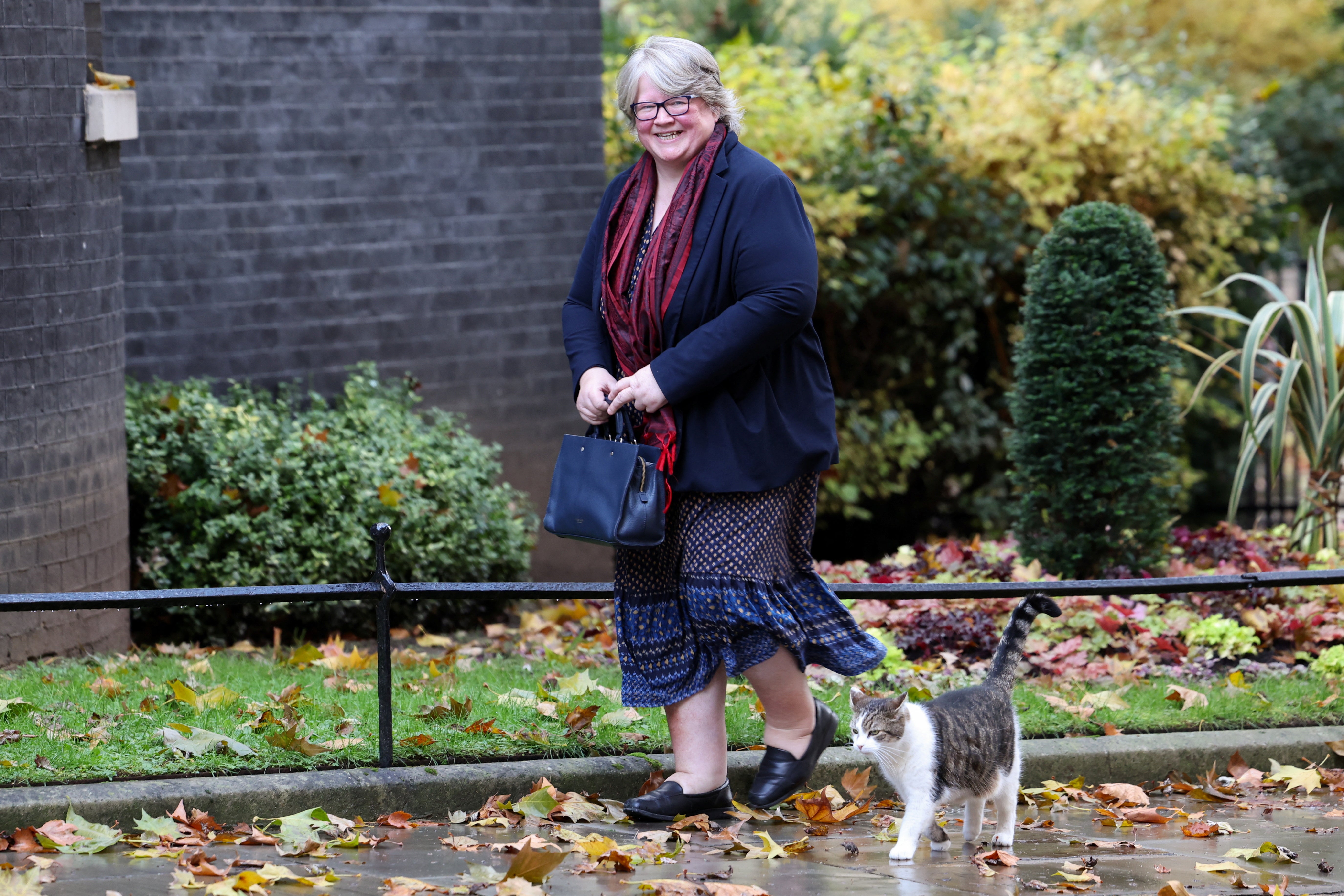Therese Coffey says she has received death threats over XL bully dogs ban
‘I must admit I’ve had several death threats about this particular legislation,’ former minister says
The former environment secretary who started the process of banning American XL bully dogs says she has received death threats as a result.
Therese Coffey, who stepped down from her cabinet position two weeks ago as part of a reshuffle, said there had been “no knee-jerk reaction” in bringing forward the ban.
She said the government had acted due to the high number of XL bully attacks and the difficulty in preventing them.
Prime minister Rishi Sunak announced in September that the XL bully would be banned after a spate of attacks, including fatalities, linked to the dog type.
Ms Coffey was tasked with leading the legislation.
“I must admit I’ve had several death threats about this particular legislation that has been brought into place and I’m conscious it is driving strong emotions,” she told MPs during a Westminster Hall debate about petitions relating to the ban.
Politicians also heard, during the opening of the debate by Petitions Committee member Nick Fletcher, that a mother whose son was killed by an XL bully had also been threatened after campaigning for improved safety.

Defending the decision to bring in a ban, Ms Coffey said: “The reality was that there were simply too many attacks happening and the proportion of attacks happening by XL bully-type dogs was considerably higher than others.”
Since Mr Sunak said he was taking action, the government has announced that new rules due to come into force on 31 December will make it illegal to breed, sell, advertise, exchange, rehome, abandon or allow XL bully dogs to stray in England and Wales.
It will be illegal to own an XL bully from 1 February unless the animal is on an exemption list, called the Index of Exempted Dogs.
Ms Coffey said the build and stature of XL dogs meant they required a high degree of training to handle effectively.
“If we think about an adult XL bully dog, we are talking about something that is about 70 kilos — these are big dogs,” she said
“These really have a lot of strength and frankly, the only way to unlock their jaws once they latch on to somebody is to basically choke it. Not kick it in the head or anything like that — that will make it grab on even tighter.
“And that is what we are dealing with where, sadly, some of these dogs do get out of control and it is the characteristics that lead them to have that physical strength.
“And also we must not get away from the fact that they are originally parts of various bits of pit bulls, mastiffs and similar.”
Ms Coffey said a less hardline approach had been taken by the Department for Environment, Food and Rural Affairs than with other dogs on the Dangerous Dogs Act, saying “everybody who loves their XL bully can keep their XL bully”.
Those who wish to keep their dogs have until the end of January to register them with the exemption scheme or they can have their dog put down and apply for compensation.
Owners will be forced to comply with strict rules including the requirement to muzzle the dogs and keep them on a lead in public, but the animals must also be microchipped and neutered.
“The government took an approach that would allow time for people to rehome, if they feel they could not keep an XL bully-type dog,” Ms Coffey said.
“But also, very different to what has happened more recently when people have a pit bull and similar, they can still apply to get a certificate to join the Index of Exempted Dogs.
“The default here is that every person who registers their XL bully-type dog will get a certificate automatically and they will automatically join the index. So that is quite a significant difference, even though I’m conscious it will cost some money to do that.”
Sir Robert Goodwill, Tory chairman of the Environment, Food and Rural Affairs Select Committee, said his cross-party panel supported the ban.
He called it a “sensible way forward” when ministers were faced with a “ticking time bomb” of future attacks.
But Ian Lavery, Labour MP for Wansbeck, said it would be a challenge to ban a dog that was not a pure breed.
“What is an XL bully? It is basically a cross-breed. And you cannot just say, ‘Well that dog looks like an XL bully… so it qualifies to be euthanised’.
“That is not the right approach, it really isn’t. A lot of these XL bullies are absolutely wonderful dogs.”
Environment minister Mark Spencer said the ban was coming in after it was found that XLs “appears to have been disproportionately involved” in a rise in dog attacks.
“That is why we have taken decisive action to ban the XL bully breed type and to attempt to keep our communities safe,” he said.
Before the debate, MPs were told that the Government’s ban faces potential legal challenges.
Join our commenting forum
Join thought-provoking conversations, follow other Independent readers and see their replies
Comments
Bookmark popover
Removed from bookmarks